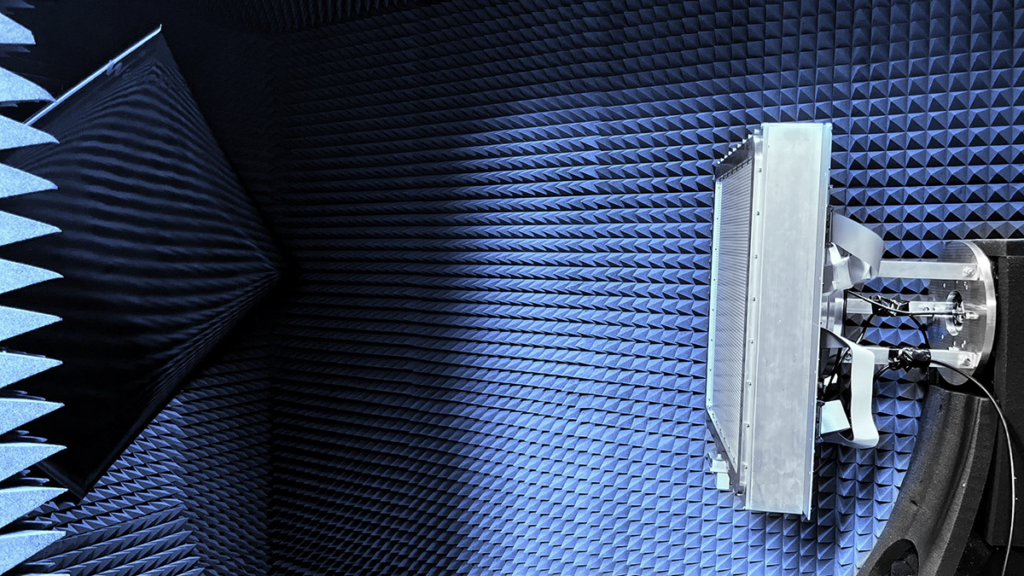Greenerwave is hoping to revolutionise SATCOM thanks to a unique solution that boosts the potential of mega-constellations (LEO satellites) and GEO satellites. Its technology, based on intelligent reflectors, maintains a low-latency broadband connection between a moving (LEO) or geostationary satellite and a flat mobile antenna. Agnostic to protocol, easy to install, cheap, and energy-efficient, this solution could in time free up land-based infrastructures and put an end to white spots. Financed by the DGA – Innovation Agency (part of the French Government of Defence), these developments directly address new challenges relating to security, connected health and self-driving cars.
SATCOM: still an under-exploited technological development
While satellites have revolutionised our capacity to communicate across the world, low earth orbit (LEO) satellites are a breakthrough technological and industrial innovation for satellite-based communications. But they still need to be fully exploited and made widely accessible.
Unlike geostationary satellites, which are very costly and only cover a fixed part of the globe with limited capacities and significant latency, LEO satellites represent the future of telecom infrastructures. They make it possible to shift to a group of mass-produced satellites covering the entire globe. Capable of evolving, they can also use broader frequency bands outside the range of conventional antennae. What’s more, future connected usages will require an uninterrupted connection regardless of how users travel (in aircraft, boats and cars) or their geographical situation. This problem is still unresolved, both for LEO and GEO satellites.
Greenerwave is moving towards intelligent and low-cost on-the-move SATCOM…
Traditional antennae (satellite dishes) are incapable of tracking moving LEO satellites or providing a continuous connection when travelling. Intelligent antennae are therefore required. But these solutions are very costly and energy intensive, and hence ill-suited to the mass market. This is precisely the problem that Greenerwave is addressing. The French deeptech is developing flat antennae capable of directing waves to a specific device, such as an antenna or a satellite, by adjusting to its position in real-time. Using relatively simple electronics, the costs and energy consumption is five times lower! This is a promising solution to optimise and generalise new connected usages.
…that boosts the potential of SATCOM
Compatible with the mass market, Greenerwave’s technology, applied to SATCOM, makes it possible to tap the full potential of LEO satellites, which will be essential as data consumption grows. It will also allow for a response adapted to the development of new connected usages that will necessitate stable satellite connections to ensure service continuity. These usages notably include connected health, which will be available in both dense and isolated areas (or white spots today). It is also an obvious solution for everything connected to satellite on-the-move communication, both for military and civilian applications. In the defence area, it is essential to ensure permanent communication between different vehicles and guarantee a permanent line of control between control units and positions, regardless of relief and elongation. Lastly, in civilian applications, this solution responds to today’s air transport challenges, as well as future challenges associated with connected or self-driving vehicles, for which service continuity is primordial.
Prestigious partnerships that validate the technology
Launched in 2018, this work quickly caught the attention of the DGA (French defence ministry), which saw it as a breakthrough solution compared with conventional intelligent antennae, and a French one to boot. The DGA financed a preliminary project to develop an emission module in the Ka-Band at a connection to the GEO Athena-Fidus satellite. This was followed by a second project designed to develop a product for use on the battlefield or on drones.
How it works
Greenerwave designs meta-surfaces comprising elements that shape electromagnetic waves. These meta-surfaces consist of a group of elements of the centimetric size called pixels that act as micro-mirrors. Each pixel can modify the sign of the reflected wave. Interactions between pixels and microwaves are managed by algorithms derived from the world of physics that direct waves after their reflection on the surface. This passive and low-cost technology aims to improve the use of electromagnetic waves to lower energy consumption and infrastructure costs.
There’s plenty of other communications editorial on our sister site, Electronic Specifier! Or you can always join in the conversation by commenting below or visiting our LinkedIn page.
